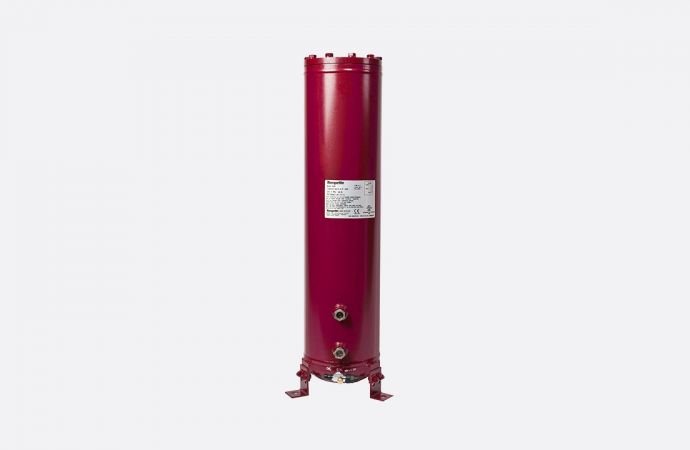California chain will employ EER calculation to compare efficiency of ammonia/CO2 and transcritical CO2 systems to that of baseline systems that use synthetic refrigerants.

Ed Estberg, consultant for Raley's, at ATMOsphere America.
Photo by Ben Beech.
Raley's, a multi-banner chain of 121 stores based in West Sacramento, Calif., plans to employ an EER (energy efficiency ratio) calculation to compare the efficiency of the natural refrigerant systems it intends to install in the coming year with that of R449A systems installed in four baseline stores.
That plan was described at the ATMOsphere America conference in Long Beach, Calif., on June 12 by Ed Estberg, a refrigeration consultant who served as senior director of facilities for Raley's from 1989 to 2009.
The EER system is so far being used in one R449A store, he said. After it is deployed in three addtional R449A stores, "we'll have a baseline and a new [natural refrigerant] store to compare it to," said Estberg during a session focused on gaining efficiency incentives for natural refrigeration.
Estberg said during the food retail session at the conference on June 14 that Raley's has opted to use an ammonia DX system using liquid CO2 overfeed as its natural refrigerant system. The chain also plans to install a transcritical CO2 system in another store.
Estberg came up with the idea to measure the EER (evaporator load per kilowatt-hour of energy purchased) of Raley's refrigeration systems after realizing that the load, or heat of rejection, could be measured in the system's three water-circuit heat exchangers (condenser, space heat reclaim and hot-water reclaim). He applied the formula, GPM (gallons per minute) X 8.34 X TD (temperature difference) X 60, to determine the total heat of rejection (THR) in BTUH; dividing THR by kWhs used gives the EER.
Estberg believes that applying this EER formula will help utilities incentivize natural refrigerant systems.
In the proof-of-concept store, he calculated an EER of 11.97, though EER can be updated every few seconds to reflect changing load or ambient conditions, he said.
In addition to allowing Raley's to compare the efficiency of a natural refrigerant system to a synthetic system, the EER system enables the chain "to dial head pressure and know in 24 hours how it affected EER," he said. "We'll be able to fine-tune stores to a greater level than ever before."
That plan was described at the ATMOsphere America conference in Long Beach, Calif., on June 12 by Ed Estberg, a refrigeration consultant who served as senior director of facilities for Raley's from 1989 to 2009.
The EER system is so far being used in one R449A store, he said. After it is deployed in three addtional R449A stores, "we'll have a baseline and a new [natural refrigerant] store to compare it to," said Estberg during a session focused on gaining efficiency incentives for natural refrigeration.
Estberg said during the food retail session at the conference on June 14 that Raley's has opted to use an ammonia DX system using liquid CO2 overfeed as its natural refrigerant system. The chain also plans to install a transcritical CO2 system in another store.
We'll be able to fine-tune stores to a greater level than ever before."
– Ed Estberg, consultant for Raley's
Estberg came up with the idea to measure the EER (evaporator load per kilowatt-hour of energy purchased) of Raley's refrigeration systems after realizing that the load, or heat of rejection, could be measured in the system's three water-circuit heat exchangers (condenser, space heat reclaim and hot-water reclaim). He applied the formula, GPM (gallons per minute) X 8.34 X TD (temperature difference) X 60, to determine the total heat of rejection (THR) in BTUH; dividing THR by kWhs used gives the EER.
Estberg believes that applying this EER formula will help utilities incentivize natural refrigerant systems.
In the proof-of-concept store, he calculated an EER of 11.97, though EER can be updated every few seconds to reflect changing load or ambient conditions, he said.
In addition to allowing Raley's to compare the efficiency of a natural refrigerant system to a synthetic system, the EER system enables the chain "to dial head pressure and know in 24 hours how it affected EER," he said. "We'll be able to fine-tune stores to a greater level than ever before."
Related stories



